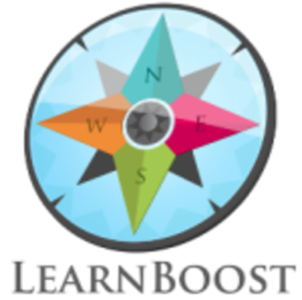2010 was a good year for Web startups. Deal flow, particularly at early stages, was active, and even though valuations were high, investor dollars were seemingly at the ready. Of the companies that made headlines and that led some of the major tech trends of the year, many were startups: Zynga (social gaming), Groupon (group buying), Foursquare (location-based networks), Tumblr (micro-blogging), and GetGlue (semantic Web), to name a few.

In pulling together our list of the Top 10 Startups of 2010 for ReadWriteWeb’s “Best of” series, we’ve decided to look beyond some of those big names and “established” startups (the term gets applied so broadly). Rather than lumping together new companies no matter their age or size, no matter whether they have an acquisition offer by Google or have a Hollywood biopic about their founder, we’ve decided to restrict our list to those startups who were founded or who launched in 2010.
We chose some of these startups due to their great features and impressive momentum. We chose some for addressing important consumer and business pain-points in particularly innovative ways. Whether any of these companies are the next Facebook or Google hardly matters. These startups left their mark on 2010, many of them helping to foster some of the most important trends of the year.
In no particular order…
Instagram: Photo Sharing Goes Viral
I can’t look at my Twitter or Facebook stream without seeing a flurry of shared links from Instagram. And I even confessed in October, the app has made me an iPhone photo addict.

ReadWriteWeb’s 2010 In Review:
- Top 10 Semantic Web Products of 2010
- Top 10 RSS and Syndication Technologies of 2010
- Best BigCo of 2010: Facebook
- Top Trends of 2010: App Stores
- Most Promising Company For 2011: SimpleGeo
- Top Trends of 2010: Internet TV
- Top 10 Startups of 2010
- Top Trends of 2010: Privacy
The free app allows users to snap photos, apply one of 11 filters, and then quickly and easily publish them to a variety of social networks, as well as follow, comment, and like within the app itself. The new camera that came with the iPhone 4 this summer spawned a lot of great mobile phone apps, and Instagram is hardly alone in the photo-sharing space. But it has had incredibly viral adoption – growing by about a 100,000 users a week after its release in October according to a thread on Quora, with rumors of 1 million users to date.
Quora: High Quality Q&A
Did you notice that reference in the Instagram entry above? “According to a thread on Quora.” It’s something we heard a lot this year as the Q&A site, founded by former Facebook CTO Adam D’Angelo, became an important new communication and knowledge-sharing tool for the tech industry. Quora launched in private beta in January and opened to the public in June. As with Instagram, Quora is a startup in a crowded space; there are no shortage of Q&A sites. But Quora has attracted a very high caliber of respondents during its beta, particularly those “in the know” in Silicon Valley, and the site has become a real treasure trove of news and advice. Quora allows you to subscribe to topics, users, and questions, and the ability to vote up good answers, along with the ability to offer edits on questions and answers, have helped to build a smart network on the site.

Flipboard: Curated Reading, Built for the iPad
We already recognized the startup as one of this year’s Top Semantic Web Products, but Flipboard – along with the iPad – helped usher in a change in the way in which we consume Web content. The free app lets you curate various feeds – RSS, Twitter, Facebook – and presents them to you via a beautiful, touchscreen UI. Rather than scrolling through the Web as we have been trained perhaps to do, Flipboard allows us to more easily browse and read. Having acquired the semantic technology startup Ellerdale, Flipboard’s technology delivers a more personalized reading experience.

Chatroulette: Spontaneity, Chat… and Dicks
Flash in the pan? Maybe. Launched in late 2009 (too late and too obscure for the “Best of” lists for that year), Chatroulette took off in early 2010, and at the peak of its popularity this year, Chatroulette boasted a million-plus users. Chatroulette connects you randomly with another person via your webcam, so you can chat via text, audio, and video with a stranger. If you don’t like the conversation, the “Next” button places you with someone else. A post on Techcrunch surmised that the site was “89% male, 47% American, and 13% perverts,” the latter figure seeming a tad low based on my experience. Despite – or maybe because of – the dicks, the site gained a lot of buzz, spawning a number of memes as well being a topic on South Park – high honors. Chatroulette also spawned a number of clones as the idea of random, spontaneous encounters became popular.

Rapportive: The Gmail Plug-in I Am Thankful for Every Day
Marshall Kirkpatrick wrote this headline back in March: “Stop What You Are Doing & Install This Plug-in: Rapportive. And honestly, I’d issue the same command today. Rapportive replaces the ads in your Gmail side bar – which is cool enough right there – but then, it fills that space with a wealth of info – a picture of the person who sent you an email, their job title from LinkedIn, recent Twitter messages they’ve sent and more. It’s become an indispensable tool for me, giving me background information right within my browser for the people with whom I communicate via email. Rapportive demonstrates some of the useful tools that can be built with our social data.

Diaspora: The Anti-Facebook, Crowdfunded
When ReadWriteWeb first coveredDiaspora in May, the group of 4 NYU students were raising money via Kickstarter to fund their idea for an alternative to Facebook. Diaspora sought to build an open-source, decentralized social network, one that respected users’ privacy. Continued dust-ups this year over Facebook and privacy, along with the fact that Diaspora’s challenge to Facebook simply made for a compelling story, gave the group a lot of press.

Within days of ReadWriteWeb’s first story, the funds raised via Kickstarter skyrocketed from $8000, just shy of its $10,000 to almost $200,000 from over 6000 backers. Diaspora released the first version of the developer code in September, and launched in private alpha in late November. The expectations for Diaspora were set quite high, with all the buzz and funding it received, and while those may be difficult to meet, Diaspora certainly represents the power of crowd funding, as well as an interest in making sure the social Web is not centralized in one company.
Hipmunk: The Power of a Good User Experience
Oftentimes we put up with painful experiences as consumers simply because there are no good alternatives, and we can lull ourselves into thinking that those unsatisfactory ways of doing things are just “how things are done.” So when I first heard about Hipmunk, an airline flight search engine, I wondered “Why?” There are already many ways to search online, ways to bid for your tickets – albeit none of them great. But it’s better, I suppose, than dealing with an airline directly.

But one look at Hipmunk – even better, one search via Hipmunk – and you can see how smart entrepreneurs can enter an already-crowded space and disrupt it with a great user interface and a great user experience. Rather than forcing you to click through pages of results to find the right flight, Hipmunk gives you the results on one page and allows you to have a pretty granular level of control over exactly the things that make a flight feasible for you – price, time of day, number of stops, for example.
LearnBoost: Bringing the Teacher Gradebook to the Web with Open Source
Like Hipmunk, LearnBoost is tackling a space that may not be particularly sexy – Web-based classroom administration tools. But tracking grades and attendance is an important, if not cumbersome, responsibility of teachers, many of whom still use the paper-and-pencil gradebook for record-keeping. In fact, LearnBoost co-founder and CEO Rafael Corrales sees that paper gradebook as the startup’s main competitor, and so LearnBoost has built a product that is not just beautiful but incredibly easy to use. LearnBoost seems to really understand educators’ needs, something that is incredibly important in education technology. LearnBoost is free, it supports data portability, and it integrates with Google Apps, for example, and the company has been very responsive since launching in August to update the product to suit the needs of those using it.

But LearnBoost doesn’t just receive kudos for its work in education technology. The company has been a leader in developing a variety of open-source tools, including Mongoose for storage, Soda for acceptance testing, and Socket.io for real-time communication. For a new company, LearnBoost has an impressive following on GitHub.
Square: The Future of Money is Mobile
We may be slightly cheating to squeeze this one into a 2010 list, as Square, the brainchild of Twitter co-founder Jack Dorsey, allows you to accept and pay via physical credit cards using a card swiper that plugs into the headphone jack of your mobile device. The hardware and app are free, but Square takes a small cut of each transaction.

Square spent most of 2010 in private beta and had its share of hardware and security problems, but the addition to the team in August of Paypal veteran Keith Rabois marked a big win for the company. Square now says it’s processing millions of dollars of mobile transactions per week, and boasts some avid users – small businesses and independent merchants who are looking for an easy and mobile way to manage credit card transactions.
InDinero: The Mint.com of Young Entrepreneurs
Describing a startup as the “Mint.com” of something felt like one of the most overused phrases in pitches in 2010. But in the case of InDinero, the description actually works, as the company really does aim to provide a similar sort of real-time financial dashboard to small businesses. Unlike traditional accounting software, InDinero is easy to set-up and use, and the analytics it offers provides small businesses with a wealth of important data.

But a nod to InDinero isn’t simply recognition that the company addresses an important business need or that it has gathered impressive traction – and funding – since launching this summer. It’s a nod to co-founder Jessica Mah, who founded her first Internet startup at age 13, entered the University of California, Berkeley at age 15 to study computer science, and now at age 20, is the CEO and architect of a profitable Internet company. Yes, of course, all the startups in this list were founded by incredibly smart and talented entrepreneurs, but Mah is particularly inspiring.
Selecting 10 top startups for 2010 was not an easy task. Do you agree with our assessments? Did we miss anyone? Let us know in the comments who you think should – or shouldn’t – make the list.










